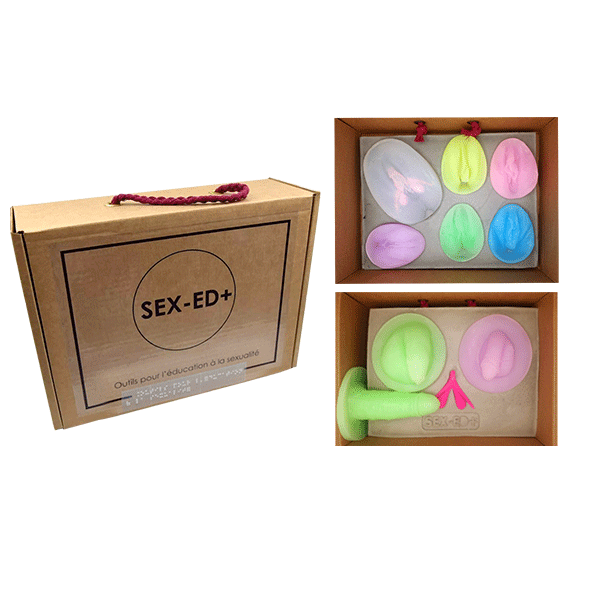“Perhaps unwittingly, people on our society tend to maintain the view that individuals with any physical disability are asexual, childlike, and without the need for sexual health education.” (Murphy &Young, 2005)
Despite those ableist beliefs, research shows that folks who are Blind or Visually impaired have the same ratio of consensual sexual activity than sighted ones, only a few years later (which seems to be linked to social isolation). And are at increased risk of experiencing sexual abuse.
This is why it is fundamental for sexuality education to be delivered in a way that is accessible to all, whatever their dis/ability status, so that eveyone can gain the necessary knowledge to experience sex in a fun, safe and pleasurable way, when it is desired.
Fact is only 50% of Blind or VI youth have access to sex-ed, and most curricula fail to effectively disseminate info about sexual health to this population.
Let’s introduce…SEX-ED + new toolkit for tactile learning, adapted to the needs of Blind and Visually impaired folks! All documents are in English and Braille and the tools are made of flesh-like silicone that mimics the texture of human skin.
So, what constitutes accessible sexuality education, based on the expressed needs and comments of Blind and Visually impaired youth?
1) CONTENT (information that should be included in a sexual health curriculum)
- Should be the same for all students
- Should include a section on disability and sexuality so all can be informed about unique issues that people with disability may face with respect to sexual health
- Should talk about the role of non verbal communication and body language in seduction
- Should include strategies for personnal safety.
2) DELIVERY (how sexual health information should be provided)
- Learning should happen through touch, role playing and simple yet detailed descriptions
- Tactile models and palpable diagrams should be available.
3) ENVIRONMENT (space that would be most comfortable and suitable for learning about sexual health)
- Classrooms should be integrated. Students living with a disability do not want to be singled-out
- Other spaces for one-on-one consultations with people who are trained about sexuality and disability should be available.
“By paying attention to the content, delivery, and environment of the sexual health experience of students, professionals can help young people with visual impairments make a positive sexual health transition to adulthood. This study found that the participants did not receive adequate sexual health education as children. In their view, more thorough and in-depth sexual health education is needed that specifically takes the needs of students who are visually impaired into account. Major concerns for the population in question include personal safety and ensuring that children with visual impairments know how to protect themselves from sexually undesirable situations. Another major concern is which specific sexual health tools teachers could use to enable the best learning outcomes for their students who are visually impaired. Health care professionals and other community stakeholders need to address the issue of sexuality so that positive attitudes toward sexuality are fostered and myths—particularly the myth that persons with visual impairments are asexual—are dispelled.“
Excerpts from “Sexual Health Education for Children with Visual Impairments: Talking About Sex Is Not Enough” C. Kruppa & S. Esmail, 2010.
Further reading:
- “Sexuality and Disability: The Missing Discourse of Pleasure”. M.S. Tepper, 2000
- “Sex Education Instruction for Students Who Are Visually Impaired: Recommandations to Guide Practionners”. G. Kapperman & S.M Kelly, 2013
- “What Is Essential is Invisible to the Eye : Intimate Relationships of Adolescents with Visual Impairment”. M.Pinquart & J.Pfeiffer, 2011.


Comments are closed.